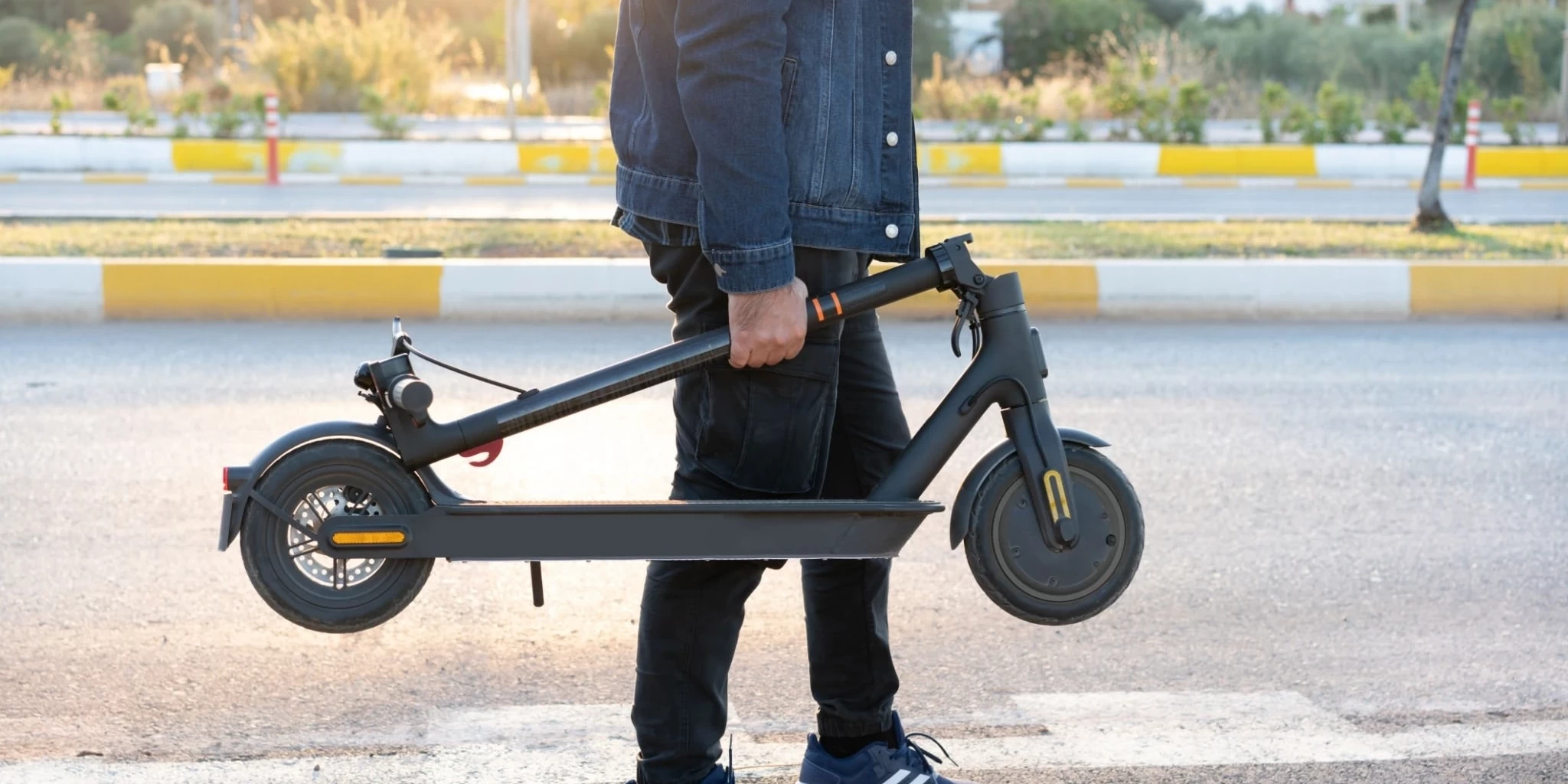Jump to:
As more people embrace urban living, cities are struggling to manage the impact of the rising number of people and cars. Some of the effects of urbanisation are traffic congestion, air pollution, and increasing carbon emissions. The traditional transport systems and infrastructure are no longer meeting the rising mobility demands of the urban population.

What Are E-Scooters?
E-scooters are micro-mobility vehicles powered by electricity and controlled by a rider. They are smaller than traditional mopeds or motorcycles and can be easily controlled by the rider. E-scooters are equipped with motors and electric batteries that can power the vehicle for up to 20 miles per hour.
The riders stand on the scooter’s platform and hold onto the handlebars for balance and control. E-scooters are lightweight and easily manoeuvrable, allowing riders to quickly move through narrow streets and lanes. They are also relatively inexpensive and can be rented through a mobile application, making them a popular mode of transport, especially for short distances.
Can E-Scooters Reduce Traffic Congestion?
E-scooters have been touted as a potential solution to traffic congestion in urban areas. They have the potential to offer a convenient and affordable way for people to travel shorter distances, reducing the number of cars on the road. E-scooters can also be a faster mode of transport as they can easily weave through heavy traffic.
A study by the national association of city transportation officials (nato) found that each e-scooter trip replaced a car trip in 38% of cases. On average, e-scooter riders travel 1. 4 miles per trip, within the range for cycling and walking. This means that e-scooters can be an alternative to cars, especially for short trips.
Advantages Of E-Scooters In Promoting Sustainable Mobility
E-scooters have several advantages over traditional modes of transport in promoting sustainable mobility. Some of these advantages include:
1. Carbon emissions reduction: e-scooters offer an environmentally friendly mode of transport by reducing the number of cars on the road and the associated carbon emissions. They also have low energy consumption compared to traditional vehicles.
2. Affordability: e-scooters are relatively inexpensive to rent, which makes them accessible to a broader range of riders. This affordability can promote equity in transportation, especially for low-income communities.
3. Convenience: e-scooters can be rented through a mobile application, making them a convenient mode of transport for short trips. They can easily be carried onto public transport or stored in compact spaces.
4. Improved health and well-being: e-scooters promote active mobility by encouraging people to exercise and move around. This can have a positive impact on health and well-being.

Challenges In Promoting E-Scooter Adoption
Although e-scooters have been identified as a potential solution to urban traffic congestion and promote sustainable mobility, several challenges must be addressed for widespread adoption. Some of these challenges include:
1. Safety: If not used correctly, e-scooters can be hazardous to riders and pedestrians. Lack of proper regulation can increase the number of accidents and injuries.
2. Infrastructure: e-scooters require the proper infrastructure and space to operate safely. Cities must invest in the appropriate infrastructure to accommodate e-scooters, such as designated lanes and parking spots.
3. Regulation: regulation is a critical challenge in promoting e-scooter adoption. Cities must create clear policies and regulations to govern e-scooter operations and ensure public safety.
4. Perception: the negative perception of e-scooters, particularly their impact on pedestrian safety and public space, can hinder their adoption.
E-Scooters And Policy Frameworks
Cities need to adopt policy frameworks that support the integration of e-scooters into their infrastructure. Policy frameworks should prioritize the safety of the riders and the public, promote equity in transportation, and encourage sustainable mobility.
One example is the “complete streets” policy framework that prioritizes using public space for all modes of transport, including e-scooters. This ensures that e-scooters are integrated into the city’s transportation plans and infrastructure.

Local And Global Use Cases Of E-Scooters In Reducing Traffic Congestion
E-scooters have been successfully integrated into the transportation systems of several cities worldwide. One example is Paris, where e-scooters have been integrated into the city’s bike-sharing system. This has reduced the number of cars on the road and improved air quality.
In California, Santa Monica has implemented a pilot program regulating e-scooter operations and promoting their integration with public transport. This has led to a reduction in traffic congestion and an increase in mobility options for the residents.
Sustainability In E-Scooter Manufacturing And Operation
Sustainability should also be considered in the manufacture and operation of e-scooter systems. This includes using environmentally friendly materials in manufacturing and efficient energy service.
One example is the bird e-scooter company, which has adopted a sustainability strategy to reduce carbon emissions. The company has invested in renewable energy and uses efficient operations to reduce environmental impact.
E-scooters can potentially reduce traffic congestion in urban areas and promote sustainable mobility. However, there are significant challenges to overcome before e-scooters can be widely adopted as a mode of transport.
Cities must invest in the proper infrastructure and policy frameworks to integrate e-scooters into the transport system while ensuring public safety. E-scooter companies must adopt sustainable manufacturing and operational processes to reduce environmental impact.
The potential of e-scooters in reducing urban traffic congestion and promoting sustainable mobility is significant. With the right policies and investments, e-scooters can be an essential part of the urban transportation system in the future.
Peaker
Meet Peaker, our suave electric scooter enthusiast from the charming streets of London. With a passion for sustainable urban mobility, Peaker navigates the world of electric scooters with a keen eye for style and efficiency. Whether he's zipping through the city or sharing his latest scooting adventures, Peaker is your go-to guide for all things electric and eco-friendly. Join him on the ride towards a greener, swifter future!





